

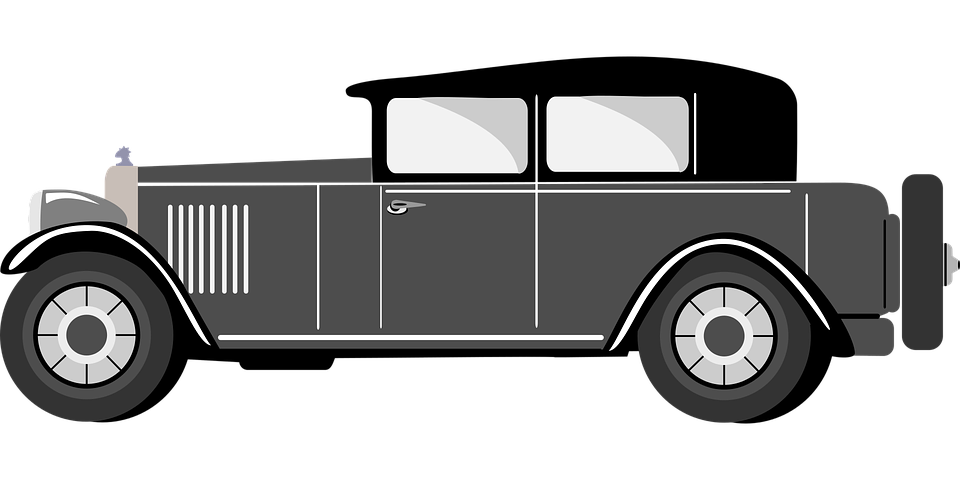
Mobile users:
For best results, view in Landscape mode.
A brougham (pronounced 'brohm' rhymes
with “foam" or 'broh -uhm') was originally
a car body style where the driver sat outside
and passengers seated within an enclosed
cabin, as per the earlier brougham
horse-drawn carriage.

Originally used for a single horse drawn enclosed carriage
for 2-4 people, the use of the word “brougham” in regards to
transportation hails back to the early to mid-1800’s when
Lord Henry Peter Brougham of England commissioned the
design of a carriage with a front mounted window.
Henry Peter Brougham (1778 - 1868)
He designed the carriage that would be light and compact,
needing just one horse and a coachman ideal for use on
busy streets.
They were particularly popular with middle and upper class
families, and became the everyday carriages of the wealthy.
It had a front window passengers could see out of;
its low step design made access and egress for passengers
easy; it was the first carriage to have elliptical springs,
steel springs that made the ride smoother,
more stable, and thus safer.
Plus, the front wheels were capable of making sharper and tighter
turns than any other 4-wheeled carriages.
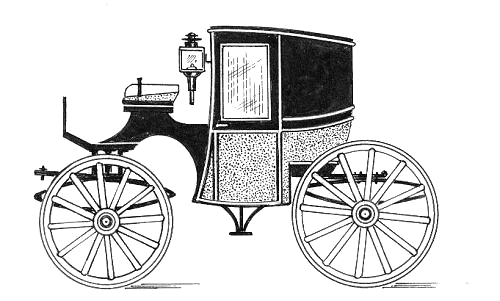
Outside, at the front for the coachman, was a boxed seat or perch,
known as a dickey box, also called a boot, that could accommodate
another passenger, such as a footman.
A footman normally used to run alongside the carriages, performed
duties like laying and waiting tables, opening and closing doors,
running errands and much more.
Small 2-seat Broughams, were called ‘Pill Boxes’, as they were
favored by doctors.
They were also called 'Bachelor' Broughams.
As a car body style, a brougham was initially a vehicle similar
to a limousine but with an outside seat in front for the chauffeur
and an enclosed cabin behind for the passengers.
As such, it was a version of the town car but, in strict use of the
term, with the sharply squared rear end of the roof and the forward-
curving body line at the base of the front of the passenger
enclosure that were characteristic of the 1800's brougham
carriage on which the car style was based.
Cadillac was the first to use the name "Brougham" on a vehicle
that did not use the Brougham body style for the
1916 Cadillac Brougham, a large 7-seat
sedan.
In 1925, Cadillac began offering Fleetwood built bodies on
some of its cars, the Brougham body style was incorporated
into the design.
Fleetwood Metal Body was an automobile coachbuilder formed
on April 1, 1909.
Its name derives from Fleetwood, Pennsylvania,
home of the company at the start, and lived on for
decades in the form of the Cadillac Fleetwood and various
Fleetwood trim lines on Cadillac cars.
In 1930, the Brougham name was given to a car body style that
had an open chauffeur compartment and an enclosed rear
riding area.
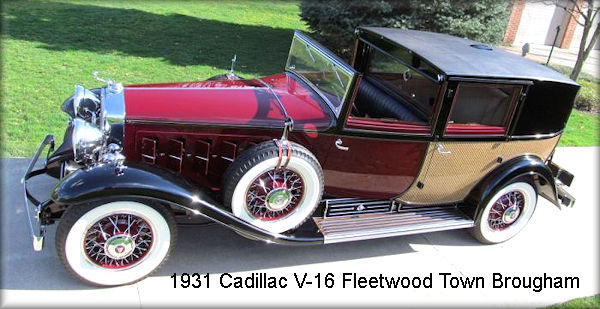
Town car / town brougham:
A coupé de ville with rear doors for the passenger area, no roof
or sides for the driver's area, and a partition between the
passengers and the driver was referred to as a "town car"
or "town brougham".
Town cars normally had side windows in the doors only.
In 1928, Ford introduced a town car body to its Model A line,
the Model A town car was sold until early 1930.
In 1930, 1,065 Model A town cars were built by the end
of production.
In 1940 and 1941, a limited edition model of the Cadillac Sixty Special
carried the Town Car name.
It was reintroduced as a coupe hardtop in 1949 using the French name
for the body style Coupe DeVille and in 1956 as a 4-door hardtop
called the Sedan DeVille.
The 1957 Cadillac Series 70 Eldorado Brougham joined the
Sixty Special and the Series 75 as the only Cadillac models
with Fleetwood bodies although Fleetwood script or crests
did not appear anywhere on the exterior of the car, and so this
would also mark the first time in 20 years that a Fleetwood
bodied car was paired with the Brougham name.
In 1957, only 400 Eldorado Broughams were made
and just 304 were built in 1958.
Between 1958 - 1961, Cadillac used the "Brougham"
sub-designation for its exclusive 4-door Eldorado models.
In 1965, the "Brougham" name was first attached to "Fleetwood"
on the Fleetwood Sixty Special as an upgraded option package,
which included a vinyl roof and special "Brougham" script
lettering on the sides, but it was not a separate model.
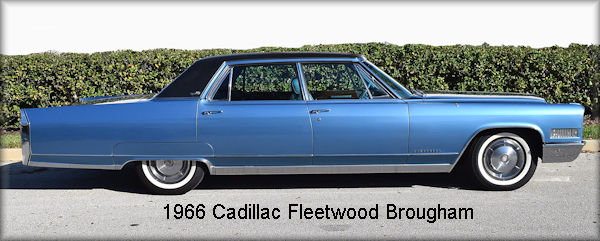
In 1966, the Fleetwood Brougham was added as a
separate model.
The Brougham name was an option package on the
1965 Cadillac Sixty Special.
The following year the Brougham moved up to becoming a
sub-series of the Fleetwood Sixty Special, which
continued through 1970.
From 1970's - 1990's, "Brougham" was used as a trim level
by General Motors, Ford Motor Company, and the
Chrysler Corp.
In 1971, the Sixty Special was only available as the well
equipped Fleetwood Sixty Special Brougham.
In 1977, the Sixty Special Series retired, the Cadillac
Fleetwood Brougham took its place as Cadillac's largest
owner-driven sedan model through 1986.
The single name "Brougham" began to be used as specific Cadillac
model in 1987, when the term "Fleetwood" was dropped
from the former Fleetwood Brougham.
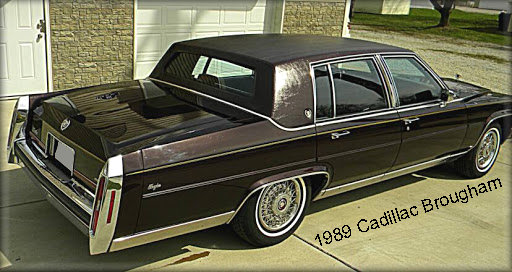
In 1988, the "Premier Formal Vinyl Roof" option became
available which gave the standard Brougham a very
formal look.
The last Cadillac Brougham rolled off the
assembly line on June 5, 1992.
The Fleetwood name returned as a RWD model with a major
redesign for 1993 (the FWD Fleetwood had been renamed Sixty
Special that year) and Brougham again became an
option package, as it had been in 1965.
